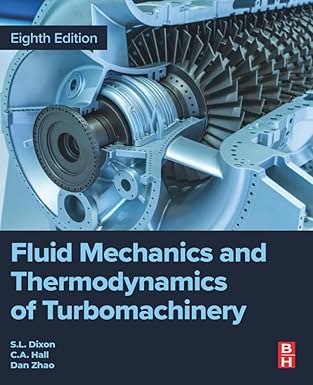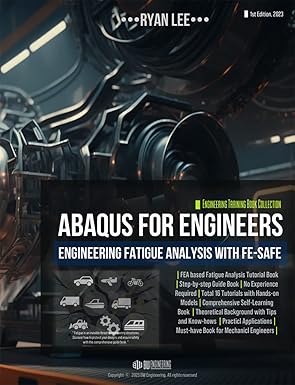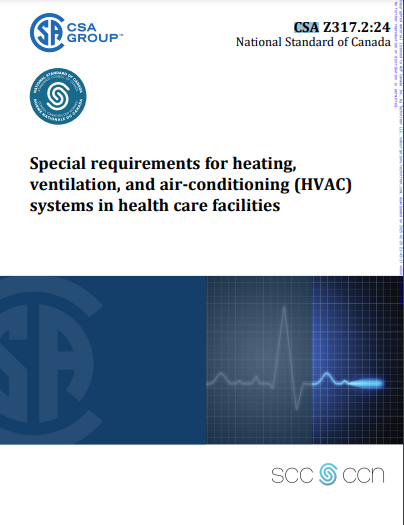For courses in the essentials of fire fighting. Foundations for success in professional fire fighting Essentials of Fire Fighting and Fire Department Operations continues the tradition of excellence in firefighter education. It meets all the requirements of Fire Fighter I and II levels of NFPA 1001®, NFPA 472®, and OSHA 1910.120. The 7th edition offers a complete support package, including skill sheets, knot and rope requirements, and coverage of essential job tasks related to medical requirements of NFPA 1582®.
چکیده فارسی
برای دورههای ضروری آتش نشانی. مبانی موفقیت در آتش نشانی حرفه ای Essentials of Fire Fighting and Fire Department Operations سنت برتری در آموزش آتش نشان را ادامه می دهد. تمام الزامات Fire Fighter I و II از NFPA 1001®، NFPA 472® و OSHA 1910.120 را برآورده می کند. نسخه هفتم یک بسته پشتیبانی کامل شامل برگههای مهارت، الزامات گره و طناب، و پوشش وظایف ضروری شغلی مرتبط با الزامات پزشکی NFPA 1582® ارائه میکند.
ادامه ...
بستن ...
Ebook details:
عنوان: Essentials of Fire Fighting, 7th Edition
نویسنده: IFSTA
ناشر: Pearson; 7th Edition (2019)
زبان: English
شابک: 9780134985664, 0134985664
حجم: 412 Mb
فرمت: Image Pdf with Ocr
ادامه ...
بستن ...
Title Page
Copyright Page
Chapter Summary
Table of Contents
List of Tables
Key Terms
Preface
Acknowledgments
Introduction
Purpose and Scope
Book Organization
Terminology
Key Information
Metric Conversions
Section A: Fire Fighter I
1 Introduction to the Fire Service and Firefighter Safety
Fire Service Mission and Organization
Fire Service Mission
Fire Service Organization
Organizational Structure and Principles
Types of Fire Departments
Fire Companies
Staffing
Fire Service Specializations
Firefighter
Officers
Fire Prevention
Training
Fire Department Regulations
Policies
Procedures
Departmental Interaction with Other Agencies
Roles and Skills of the Fire Fighter I
Reduction of Firefighter Illnesses, Injuries, and Fatalities
The 16 Firefighter Life Safety Initiatives
Safety Stand-Down
Firefighter Safety, Health, and Wellness
Safety and Health-Related Policies and Procedures
Training and Education
Fire Apparatus, Equipment, and Driver/Operators
Personal Protective Equipment (PPE)
Emergency Operations
Facility Safety
Medical and Physical Requirements
Firefighter Wellness Programs
Injuries
Illnesses
Obesity
Infection and Exposure Control Programs
Member Assistance Programs
Substance Abuse
Tobacco Use/dependence
Occupational Stress
Atypically Stressful Events
Operational Safety and Scene Management
Situational Awareness: Safe Operations
Response Safety
Mounting and Dismounting Apparatus
Response Hazards for Passengers
Safe Practices When Riding Apparatus
Structural Fire Scene Safety
Scene Security
Environmental Conditions
Emergency Scene Lighting Deployment
Emergency Scene Lighting Equipment
Safety Considerations for Emergency Scene Lighting
Placement of Emergency Scene Lighting
Personnel Accountability
Passport System
SCBA Tag System
Computer-Based Electronic Accountability Systems
Highway/roadway Incident Scene Safety
Highway/Roadway Incident Hazards
Traffic Incident Management
Traffic Control Measures and Devices
Chapter Review
Discussion Questions
Chapter 1 End Notes
Key Terms
Skill Sheets
2 Communications
Receiving Nonemergency Calls
Receiving Emergency Calls
Public Alerting Systems
Communications Center Equipment
Processing Emergency Calls
Collecting Information
Relaying Information to Responding Units or Personnel
Radio Communications
Radio Systems
Location and Size
Signal Transmission
Fireground Channels
Radio Limitations
Distance
Physical Barriers
Dead Zones
Interference
Ambient Noise
Radio Procedures
Chapter Review
Discussion Questions
Key Terms
Skill Sheets
3 Building Construction
Construction Classifications
United States Construction
Type I (Fire-resistive)
Type II (Noncombustible)
Type III (Ordinary Construction)
Type IV (Heavy Timber)
Type V (Wood Frame)
Factory-built Homes
Manufactured (Mobile) Homes
Other Types of Factory-Built Homes
Floors, Ceilings, and Walls
Floors and Ceilings
Walls
Basements and Stairs
Basements
Stairs
Protected Stairs
Exterior Stairs
Unprotected Stairs
Roofs
Roof Types
Flat Roofs
Pitched Roofs
Arched Roofs
Roof Construction
Roof Supports
Roof Decks
Roof Coverings
Roof Penetrations and Openings
Roof Modifications
Green Roofs
Cold Roofs
Photovoltaic Roofs
Rain or Snow Roofs
Roof Security
Roof-Mounted Equipment
Doors
Swinging Doors
Sliding Doors
Folding Doors
Vertical Doors
Revolving Doors
Wood Panel And Flush Doors
Glass Doors
Metal Doors
Fire Doors
Overhead Rolling Steel Fire Doors
Horizontal Sliding Fire Doors
Swinging Fire Doors
Windows
Fixed Windows
Movable Windows
Security Windows
Rolling Steel Shutters
Chapter Review
Discussion Questions
Chapter 3 End Notes
Key Terms
4 Fire Dynamics
Fire Science
Physical Science Terminology
Fire Triangle and Tetrahedron
Ignition
Combustion
Nonflaming Combustion
Flaming Combustion
Products of Combustion
Pressure Differences
Thermal Energy (Heat)
Difference Between Heat Release Rate and Temperature
Sources of Thermal Energy
Chemical Energy
Electrical Energy
Mechanical Energy
Heat Transfer
Conduction
Convection
Radiation
Interaction Among the Methods of Heat Transfer
Fuel
Gases
Liquids
Solids
Oxygen
Self-sustained Chemical Reaction
Compartment Fire Development
Stages of Fire Development
Incipient Stage
Growth Stage
Thermal Layering
Transition to Ventilation-Limited Decay
Rapid Fire Development
Fully Developed Stage
Fuel-Limited Conditions
Ventilation-Limited Conditions
Decay Stage
Fuel-Limited Decay
Ventilation-Limited Decay
Structure Fire Development
Flow Path
Ventilation and Wind Considerations
Unplanned Ventilation
Wind Conditions
Smoke Explosions
Effects of Fire Fighting Operations
Reaction of Building Construction to Fire
Construction Type and Elapsed Time of Structural Integrity
Fuel Load of Structural Members and Contents
Furnishings and Finishes
Combustible Exterior Wall Coverings
Combustible Roof Materials
Building Compartmentation
Effects of Building Construction Features
Modern vs. Legacy Construction
Compartment Volume and Ceiling Height
Thermal Properties of the Building
Failure of Lightweight Trusses and Joists
Construction, Renovation, And Demolition Hazards
Chapter Review
Discussion Questions
Chapter 4 End Notes
Key Terms
5 Firefighter Personal Protective Equipment
Personal Protective Equipment (PPE)
Station and Work Uniforms
Structural Fire Fighting PPE
Helmets
Eye Protection
Protective Hoods
Protective Coats
Protective Trousers
Protective Gloves
Protective Footwear
Personal Alert Safety Systems (PASS)
Hearing Protection
Wildland PPE
Roadway Operations Clothing
Safety Considerations for PPE
Preparation of PPE for Reuse
Inspecting PPE for Damage or Contamination
Cleaning PPE
Repairing PPE
Self-Contained Breathing Apparatus (SCBA)
Types of Respiratory Protection Equipment
Respiratory Hazards
Oxygen Deficiency
Elevated Temperatures
Particulate Contaminants
Gases and Vapors
Airborne Pathogens
SCBA Components
Backplate and Harness Assembly
Air Cylinder Assembly
Regulator Assembly
Facepiece Assembly
Additional SCBA Components
SCBA Protection Limitations
Wearer Limitations
Equipment Limitations
Donning and Doffing Breathing Apparatus
General Donning Considerations
Donning an Unmounted SCBA
Donning from a Seat Mount
Donning from a Side or Rear External Mount
Donning from a Backup Mount
Donning the Facepiece
Doffing Protective Breathing Apparatus
Inspection and Maintenance of SCBA
SCBA Inspection and Care
SCBA Inspections
SCBA Care
Annual Scba Inspection and Maintenance
Refilling SCBA Cylinders
Stationary Fill Stations
Mobile Fill Systems
Firefighter Breathing Air Replenishment Systems (FBARS)
Replacing SCBA Cylinders
Storing Respiratory Protection Equipment
Using Respiratory Protection Equipment
Safety Precautions for SCBA Use
Exit Indicators
Nonemergency Exit Techniques
Buddy System
Controlled Breathing
Egress Paths
Chapter Review
Discussion Questions
Chapter 5 End Notes
Key Terms
Skill Sheets
6 Portable Fire Extinguishers
Classifications of Portable Fire Extinguishers
Class A
Class B
Class C
Class D
Class K
Types of Portable Fire Extinguishers
Pump-Type Water Extinguishers
Stored-Pressure Water Extinguishers
Stored-Pressure Water-Mist Extinguishers
Stored-Pressure Wet Chemical Extinguishers
Aqueous Film Forming Foam (AFFF) Extinguishers
Clean Agent Extinguishers
Carbon Dioxide (CO2) Extinguishers
Dry Chemical Extinguishers
Handheld Units
Wheeled Units
Dry Powder Extinguishers
Selecting and Using Portable Fire Extinguishers
Selecting the Proper Fire Extinguisher
Using Portable Fire Extinguishers
Chapter Review
Discussion Questions
Key Terms
Skill Sheets
7 Ropes and Knots
Rope and Webbing
Life Safety Rope
Utility Rope
Rope Materials
Synthetic Fiber Rope
Natural Fiber Rope
Rope Construction
Kernmantle Rope
Laid (Twisted) Rope
Braided Rope
Braid-On-Braid Rope
Rope Maintenance
Inspecting Rope
Maintaining Rope
Cleaning Rope
Maintaining a Rope Log
Rope Storage
Webbing
Materials and Construction
Inspection, Maintenance, and Storage of Webbing
Knots
Elements of a Knot
Types of Knots and Hitches
Overhand Safety Knots
Clove Hitch
Figure-Eight
Figure-Eight Bend
Figure-Eight On a Bight
Figure-Eight Follow Through
Water Knot
Hoisting Tools and Equipment
Hoisting an Axe
Hoisting a Pike Pole
Hoisting a Ladder
Hoisting Hoselines
Hoisting a Power Saw
Other Emergency Scene Uses
Rescue Uses
Control Zone Perimeter
Search Lines
Object Stabilization
Chapter Review
Discussion Questions
Key Terms
Skill Sheets
8 Ground Ladders
Parts of a Ladder
Ladder Types
Single Ladders
Roof Ladders
Extension Ladders
Ladder Inspection, Cleaning, and Maintenance
Inspecting and Service Testing Ladders
Checking Ladder Markings and Labels
Inspecting Metal Ladders
Inspecting Fiberglass Ladders
Wooden Ladders/Ladders with Wooden Components
Inspecting Roof Ladders
Inspecting Extension Ladders
Service Testing Ladders
Ladder Cleaning
Ladder Maintenance
Ladder Safety
General Guidelines for Ladder Safety
Safety When Raising Ladders
Electrical Hazards
Position of the Fly Section on Extension Ladders
Securing the Halyard
Carrying Ladders
Selecting the Correct Ladder
Removing Ladders From the Apparatus
Carrying Ladders Safely
Placing Ground Ladders
Situational Awareness: Ladder Assignments
Factors Affecting Ground Ladder Placement
Securing Ground Ladders
Heeling
Tying In
Ladder Raises
Transition from Carry to Raise
One-Firefighter Raise
One-Firefighter Single Ladder Raise
One-Firefighter Extension Ladder Raise
Two-Firefighter Raises
Three-Firefighter Raises
Four-Firefighter Flat Raise
Moving a Raised Ladder
Pivoting Ladders with two Firefighters
Shifting Raised Ground Ladders
Working from a Ladder
Climbing Ladders
Securing to the Ladder
Carrying Tools Up and Down Ladders
Deploying a Roof Ladder on a Pitched Roof
Assisting a Victim Down a Ladder
Chapter Review
Discussion Questions
Key Terms
Skill Sheets
9 Forcible Entry
Basic Principles of Forcible Entry
Forcible Entry Tools
Cutting Tools
Axes
Metal Cutting Devices
Handsaws
Power Saws
Prying Tools
Manual Prying Tools
Hydraulic Prying Tools
Pushing/Pulling Tools
Striking Tools
Tools Used in Combination
Tool Safety
Carrying Tools
Care and Maintenance of Forcible Entry Tools
Wooden Handles
Fiberglass Handles
Cutting Edges
Plated Surfaces
Unprotected Metal Surfaces
Forcing Entry Through Doors
Gaining Access to the Property
Door Locks/Latches
Mortise Latch and Lock
Cylindrical Lock
Rim Lock
High Security Locks
Locking Devices
Coordinating Forcible Entry and Door Control
Breaking Door Glass
Forcing Swinging Doors
Inward-Swinging Doors
Outward-Swinging Doors
Double-Swinging Doors
Doors with Drop Bars
Tempered Plate Glass Doors
Forcing Sliding Doors
Forcing Security Doors and Gates
Through-the-Lock Forcible Entry
K-Tool
A-Tool
J-Tool
Shove Knife
Forcing Padlocks
Forcing Overhead Doors
Forcing Fire Doors
Forcing Entry Through Windows
Breaking Window Glass
Forcing Windows
Breaching Walls
Exterior Walls
Wood Frame Walls
Brick or Concrete Block Walls
Concrete Walls
Metal Walls
Interior Walls
Plaster or Gypsum Partition Walls
Reinforced Gypsum Walls
Chapter Review
Discussion Questions
Key Terms
Skill Sheets
10 Structural Search and Rescue
Firefighter Survival During Interior Operations
Situational Awareness: Search and Rescue Operations
Personal Preparation for Survival
Recognition and Avoidance of Hazards
Determining Tenability
Identifying Safe Havens
Air Management
Shelter in Place
Air Monitoring
Reasons for Air Monitoring
Air Monitoring Equipment
Atmospheric Hazards
Oxygen Enrichment and Deficiency
Flammability
Toxicity
Atmospheric Monitoring
Calibration
Air Monitoring Safety
Action Levels
Structural Searches
Search Preparation
Building Floor Plan
Tools and Equipment
Thermal Imagers
Search Safety Guidelines
Fire Isolation
Marking Systems
Primary Search
Secondary Search
Search Methods
Oriented-Search Method
Wide Area Search Method
Veis Method
Victim Removal
Victim Self-Evacuation
Shelter-in-Place
Victim Removal Techniques
Emergency Calls for Assistance – Mayday Protocols
Evacuation
Immediate Actions to Improve Survivability
Escaping to a Safe Haven
Rapid Intervention
Tracking Devices
Removing Located Firefighters
Chapter Review
Discussion Questions
Chapter 10 End Notes
Key Terms
Skill Sheets
11 Tactical Ventilation
Reasons for Tactical Ventilation
Controlling Oxygen Availability
Flow Path Control
Rapid Fire Development Potential
Removing Hot Gases and Smoke
Applications for Life Safety
Applications for Interior Operations: Interior Fire Attack and Search and Rescue
Applications During Overhaul
Safety Considerations When Ventilating
Situational Awareness: Tactical Ventilation
Unplanned Ventilation and Structural Integrity
Wind Conditions
Exposures
Ventilation Location
Roof Integrity
Ventilation Tools and Equipment
Tools for Creating Openings
Air Movement Equipment
Inspection and Maintenance of Ventilation Equipment
Horizontal Ventilation
Natural Horizontal Ventilation
Wind Assisted Ventilation
Natural Ventilation Before or During Fire Suppression
Natural Ventilation After Fire Suppression
Mechanical Horizontal Ventilation
Mechanical Horizontal Ventilation Before and During Fire Suppression
Mechanical Horizontal Ventilation Uses After Fire Suppression
Negative-Pressure Ventilation
Positive-Pressure Attack
Positive-Pressure Ventilation
Positive-Pressure Ventilation in Commercial and Multistory Buildings
Hydraulic Ventilation
Vertical Ventilation
Requirements for Successful Vertical Ventilation
Vertical Ventilation Methods
Ventilating Flat Roofs
Ventilating Shingle-Covered Pitched Roofs
Ventilating Slate or Tile-Covered Pitched Roofs
Ventilating Metal Roofs
Creating Trench Cuts
Ventilation of Specific Compartments and Structures
Basement Fires
Methods For Ventilating Basements
Breaching Floors
Fires in Windowless Buildings
High-Rise Fires
Chapter Review
Discussion Questions
Chapter 11 End Notes
Key Terms
Skill Sheets
12 Fire Hose
Fire Hose Characteristics
Hose Sizes
Hose Diameter
Hose Length
Hose Couplings
Threaded Couplings
Nonthreaded Couplings
Inspection, Care, and Maintenance of Fire Hose
Inspecting Hose
Washing Hose
Drying Hose
Storing Hose
Preventing Damage to Hose
Mechanical Damage
Thermal Damage
Organic Damage
Chemical Damage
Corrosion
Age Deterioration
Hose Rolls
Straight Roll
Donut Roll
Twin Donut Roll
Hose Loads
Hose Loading Guidelines
Flat Load
Accordion Load
Combination Load
Preconnected Hose Loads for Attack Lines
Preconnected Flat Load
Triple Layer Load
Minuteman Load
Booster Hose Reels
Chapter Review
Discussion Questions
Key Terms
Skill Sheets
13 Hose Operations and Hose Streams
Supplying Water
Fire Hydrants
Dry-Barrel Hydrants
Wet-Barrel Hydrants
Out-of-Service Hydrants
Fire Hydrant Connection Tools
Fire Hydrant Connections
Soft Intake Connections
Hard Intake Connections for Dry-Barrel Hydrants
Mobile Water Supply Operations
Static Water Sources
Intake Strainers
Water Shuttle Operations
Deploying Hose
Hose Deployment Tools
Hose Rollers
Hose Bridge
Chafing Block
Hose Strap, Hose Rope, and Hose Chain
Hose Valves and Appliances
Valves
Valve Devices
Fittings
Forward Lay
Making the Hydrant Connection
Using Four-Way Hydrant Valves
Reverse Lay
Deployment of Preconnected Hoselines
Deployment of Hose Sections
Advancing Hoselines
Advancing Hose into a Structure
Advancing Hose Vertically
Advancing Hose Up and Down Stairways
Standpipe Operations
Improvising a Standpipe
Advancing Hose Up a Ladder
Hose Streams and Nozzles
Extinguishing Properties of Water
Hose Stream Nozzles
Smooth Bore Nozzles
Fog Nozzles
Broken-Stream Delivery Devices
Nozzle Maintenance
Nozzle Control Valves
Slide Valve
Hose Stream Patterns
Stream Flow Rates
Solid Streams
Fog Streams
Broken Streams
Applying Hose Streams
Operating Small Hoselines
One-Firefighter Method for Small Hoseline Operations
Two-Firefighter Method for Small Hoseline Operations
Operating Large Attack Hoselines
One-Firefighter Method for Large Hoseline Operations
Two-Firefighter Method for Large Hoseline Operations
Operating Nozzles
Friction Loss
Water Hammer
Operating Master Stream Devices
Chapter Review
Discussion Questions
Key Terms
Skill Sheets
14 Fire Suppression
The Science Behind Fire Suppression
Temperature Reduction
Fuel Removal
Oxygen Exclusion
Chemical Flame Inhibition
Structural Fire Attack
Situational Awareness: Structural Fire Attack
Making Entry
Gas Cooling
Direct Attack
Indirect Attack
Combination Attack
Transitional Attack
Fires in Upper Levels of Structures
Belowground Structure Fires
Residential Basements
Commercial Basements and Subfloors
Exposure Protection
Supporting Fire Protection Systems
Connecting to a Fire Department Connection (FDC)
Closing a Main Control Valve
Stopping the Flow from a Sprinkler
Building Utilities
Situational Awareness: Building Utilities
Electricity
Commercial Power Supply
Alternative Energy Sources
Gas Utilities
Natural Gas
Liquefied Petroleum Gas (LPG)
Water
Vehicle Fires
Vehicle Scene Safety
Avoiding Common Injuries at Vehicle Scenes
Controlling Fuel Leaks
Selecting Hose Streams for Vehicle Fires
Maintaining Flash Fire Protection
Vehicle Fire Attack
Engine or Trunk Compartment Fires
Passenger Compartment Fires
Undercarriage Fires
Alternative Fuel Vehicles
Natural Gas Vehicle Fuel (CNG and LNG)
LPG Vehicle Fuel
Electric or Hybrid Electric
Ethanol/Methanol
Biodiesel
Hydrogen
Exterior Class a Fires
Situational Awareness: Exterior Class a Fires
Stacked and Piled Materials
Small Unattached Structures
Trash Container Fires
Ground Cover Fires
Situational Awareness: Ground Cover Fires
Types of Ground Cover Fires
Ground Fire
Surface Fire
Crown Fire
Ground Cover Fire Behavior
Ground Cover Fuels
Weather
Topography
Parts of a Ground Cover Fire
Ground Cover Fire Attack
Types of Fire Attack
Fire Lines
Ground Cover Fire Safety Principles and Practices
Lookouts, Communications, Escape Routes, and Safety Zones (LCES)
Nonfire Hazards
Chapter Review
Discussion Questions
Chapter 14 End Notes
Key Terms
Skill Sheets
15 Overhaul, Property Conservation, and Scene Preservation
Overhaul
Overhaul Safety
Hidden Fires
Overhaul Procedures
Gross Decontamination Following Overhaul
Property Conservation
Purpose of Property Conservation
Salvage Equipment
Salvage Covers
Automatic Sprinkler Kit
Carryalls
Floor Runners
Dewatering Devices
Water Vacuum
Folding/Rolling and Spreading Salvage Covers
One-Firefighter Spread with a Rolled Salvage Cover
One-Firefighter Spread with a Folded Salvage Cover
Two-Firefighter Spread with a Folded Salvage Cover
Salvage Procedures
Improvising with Salvage Covers
Removing Water with Chutes
Constructing a Catchall
Splicing Covers
Splicing a Chute to a Catchall
Covering Openings
Salvage Equipment Care and Maintenance
Scene Preservation and Protection
Reasons for Protecting the Fire Scene
Area of Origin
Obvious Signs of Fire Origin
Procedures for Protecting the Area of Origin
Fire Cause
Identifying Signs of Arson
Protecting Evidence in Place
Moving Materials to a Safe Location
Chapter Review
Discussion Questions
Chapter 15 End Notes
Key Terms
Skill Sheets
16 Building Materials, Structural Collapse, and Effects of Fire Suppression
Building Materials
Wood
Masonry
Metal
Iron
Steel
Aluminum
Other Metals
Reinforced Concrete
Gypsum
Lath and Plaster
Glass/Fiberglass
Plastic
Composite or Engineered Materials
Structural Collapse
Fire Factors Contributing to Structural Collapse
Construction Type
Building Condition
Length of Fire Exposure
Stage of Fire
Building Contents
Indicators of Structural Instability and Collapse
Establishment of Collapse Zones
Actions Taken When Collapse is Imminent
Dangerous Building Conditions and Fire Suppression Activities
Effects of Building Ventilation Systems on Tactical Ventilation
Added Water Load from Suppression Activities
Collapse Considerations after Extinguishment
Chapter Review
Discussion Questions
Chapter 16 End Notes
Key Terms
17 Technical Rescue Support and Vehicle Extrication Operations
Assistance at Technical Rescue Incidents
Firefighter Roles at Technical Rescue Incidents
Recognizing the Emergency and Hazards
Establishing and Maintaining Scene Security
Retrieving Rescue Tools and Equipment
Rescue Practices and Goals
Rope Rescue
Confined-Space Rescue
Trench Rescue
Structural Collapse Rescue
Vehicle Rescue
Water and Ice Rescue
Cave, Mine, and Tunnel Rescue Operations
Machinery Rescue
Elevator Rescue
Escalator Rescue
Electrical Line Emergencies
Rescue Tools
Power Sources
Electric
Hydraulic
Pneumatic
Stabilizing Tools
Hydraulic Jack
Nonhydraulic Jack
Tensioned Buttress System
Wheel Chocks
Cribbing Materials
Powered Rescue Tools
Spreaders
Cutters (Shears)
Combination Spreader/Cutters (Shears)
Extension Rams
Cutting Tools
Reciprocating Saw
Rotary Rescue Saw
Circular Saw
Whizzer Saw
Air Chisel
Lifting Tools
Tripods
Pneumatic Lifting Devices
Pulling Tools
Winches
Come-Alongs
Chains
Tools Used in Other Activities
Pneumatic Nailers
Impact Tools
General Vehicle Anatomy
Common Vehicle Terminology
Vehicle Frame
Vehicle Windows
Laminated Safety Glass
Tempered Glass
Vehicle Extrication Incidents: Size-Up and Stabilization
Vehicle Incident Size-Up
Controlling Hazards
Vehicle Fuel Types
Vehicle Electrical Systems
HID Lighting Systems
Assessing the Need for Extrication
Stabilizing the Vehicle
Using Wheel Chocks
Using Cribbing Materials
Using Lifting Devices
Using Struts and Tensioned Buttress Systems
Securing the Electrical System
Nonelectric Vehicles
Electric Vehicles
Passenger Safety Systems
Seat Belts
Supplemental Restraint Systems (SRS) and Side-impact Protection Systems (SIPS)
Head Protection Systems (HPS)
Extendable Roll Over Protection Systems (ROPS)
Vehicle Extrication Incidents: Victim Access
Opening a Normally Operating Door
Removing a Window
Removing Safety Glass
Removing Tempered Glass
Prying a Door Open
Removing the Vehicle Roof
Cutting Posts
Displacing the Dashboard
Chapter Review
Discussion Questions
Key Terms
Skill Sheets
18 Foam Fire Fighting, Liquid Fires, and Gas Fires
Foam Fire Fighting
Foam Generation
Foam Expansion
Foam Concentrates
Class A Foam
Class B Foam
Foam for Specific Applications
Foam Hazards
Foam Proportioning
Eduction
Injection
Premixing
Foam Proportioners
In-Line Foam Eductors
Foam Nozzle Eductors
Apparatus-Mounted Proportioners
Compressed Air Foam Systems (CAFS)
Fog Nozzles Vs. Foam Nozzles
Fog Nozzles
Foam Nozzles
Assembling a Foam Fire Stream System
Foam Application Techniques
Roll-On Method
Bank-Down Method
Rain-Down Method
Retreating to a Safe Location
Liquid and Gas Fuel Fires
Pressurized Vessels
Propane
Industrial Pressure Vessels
Valve Control
Boiling Liquid Expanding Vapor Explosions (BLEVEs)
Bulk Transport Fires
Gas Cylinder Fires
Fires in Gas Distribution Systems
Preventing Reignition
Retreating to a Safe Location
Chapter Review
Discussion Questions
Key Terms
Skill Sheets
19 Incident Scene Operations
Initiating Operations
Establishing Command and Incident Command System
Initial Assignments
National Incident Management System-Incident Command System (NIMS-ICS)
Establishing Communications
Conducting Size-Up
Size-Up While Responding
Size-Up On Arrival
Fire Behavior Indicators
Evaluations of Fire Growth and Development
Transmitting the Arrival Report
Initial Risk Assessment
Condition Indicators
Operational Assignments
Operational Strategies
Requests for Additional Resources
Transferring Command
Coordinating Unit Operations
Selecting Hoselines
Selecting Hose Appliances
Selecting Nozzles
Making Entry
Communicating On-Scene
Status Reports
Strategic Transitions
Coordinating Resources
Search and Rescue Coordination
Ventilation Coordination
Strategies for Energized Utility Fires (Class C)
Electrical Hazards
Guidelines for Electrical Emergencies
Small Electrical Fires
Transmission Lines and Equipment
Hazard Awareness in Underground Spaces
Postincident Reports
Chapter Review
Discussion Questions
Chapter 19 End Notes
Key Terms
Skill Sheets
20 Fire Origin and Cause Determination
Fire Investigation Roles and Responsibilities
Fire Investigation: Firefighter Responsibilities
Fire Investigation: Fire Investigator Responsibilities
Area of Origin Assessment
Structure Fires
Scene Assessment and Exterior Examination
Interior Examination
Total Structural Fire Loss
Exterior Fires
Vehicle Fires
Fire Cause Assessment
Ignition Source
Material First Ignited
Ignition Sequence
Fire Cause Classifications
Accidental
Natural
Incendiary
Undetermined
Signs of Fire Cause
Evidence Preservation
Types of Evidence
Direct Evidence
Circumstantial Evidence
Physical Evidence
Evidence Preservation Techniques
Legal Considerations For Evidence Preservation
Chapter Review
Discussion Questions
Key Terms
Skill Sheets
21 Maintenance and Testing Responsibilities
Equipment Maintenance
Maintaining Power Plants and Electrical Generators
Maintaining Power Rescue Tools
Maintaining Portable Lighting Equipment
Service Testing Fire Hose
Test Site Preparation
Service Test Procedure
Indicators of Removal from Service
Recording Procedures
Chapter Review
Skill Sheets
22 Community Risk Reduction
Importance of Fire and Life Safety Programs
Private Dwelling Fire and Life Safety Surveys
Fire and Life Safety Hazards
Unsafe Behaviors
Unsafe Conditions
Home Survey Documentation
Planning and Public Awareness
Educational Opportunities
Professional Courtesy
Fire and Life Safety Presentations
Basic Presentation Skills
Informational Material
Learning Objectives
Outlines and Multimedia Presentations
Classroom Activities
Question-and-Answer Sessions
Fire and Life Safety Messages
Accurate Messages
Positive Messages
Targeted Messages
Presentations to Young Children
Classroom Considerations
Children’s Common Fears
Appropriate Vocabulary
Learning Style
Fire Station Tours
Preincident Surveys
Identifying Water Supply Sources and Connections
Identifying Unsafe Conditions
Recognizing Hazardous Processes
Recognizing Fire Alarm Systems
Fire Alarm System Components
Fire Command Center
Protected Premises Systems
Supervising Station Alarm Systems
Recognizing Fire Alarm Initiating Devices
Manual Pull Stations
Heat Detectors
Smoke Detectors and Alarms
Flame Detectors
Fire-Gas Detectors
Combination Detectors
Recognizing Automatic Sprinkler Systems
Sprinkler System Components
Water Supply
Wet-Pipe Sprinkler Systems
Dry-Pipe Sprinkler Systems
Deluge Sprinkler Systems
Preaction Sprinkler Systems
Special Extinguishing Systems
Recognizing Standpipe and Hose Systems
Recognizing Smoke Management Systems
Smoke Control Systems
Firefighters’ Smoke Control Station (FSCS)
Recognizing Nonpermitted Structural Modifications to Structures and Roofs
Creating Site Sketches and Diagrams
Chapter Review
Discussion Questions
Chapter 22 End Notes
Key Terms
Skill Sheets
23 First Aid Provider
Fire-Service-Based Emergency Medical Care
Patient Confidentiality
Infection Control
Commonly Encountered Communicable Diseases
Hepatitis
Tuberculosis
HIV/AIDS
Multi Drug-Resistant Organisms (MDROs)
Other Diseases
Tests and Treatment for Communicable Diseases
Immunizations
Body Substance Isolation (BSI)
Hand Washing
Personal Protective Equipment (PPE)
Cleaning and Disposal of Contaminated Items
Patient Assessment
Airway
Breathing
Circulation/Compressions
Cardiac Arrest and Cardiopulmonary Resuscitation (CPR)
Automated External Defibrillators
Chest Compressions
Administering Chest Compressions
Chest Compressions for Adults
Chest Compressions for Children
Chest Compressions for Infants
Discontinuing CPR
Bleeding Control
Types of External Bleeding
Arterial Bleeding
Venous Bleeding
Capillary Bleeding
Controlling External Bleeding
Direct Pressure
Elevation
Internal Bleeding
Shock Management
Types of Shock
Hypovolemic Shock
Cardiogenic Shock
Neurogenic Shock
Other Types of Shock
Signs and Symptoms of Shock
Treatment for Shock
Chapter Review
Discussion Questions
Key Terms
24 Analyzing the Incident
Apie Response Model
What is a Hazardous Materials Incident?
How Can Hazmat Hurt You?
Acute Vs Chronic
Routes of Entry
Three Mechanisms of Harm
States of Matter: Hazardous Materials
Gaseous Hazmat
Liquid Hazmat
Solid Hazmat
Physical Properties
Vapor Pressure
Boiling Point
Melting Point/Freezing Point/Sublimation
Vapor Density
Solubility/Miscibility
Specific Gravity
Persistence and Viscosity
Appearance and Odor
Chemical Properties
Flammability
Flash Point
Autoignition Temperature
Flammable, Explosive, or Combustible Range
Corrosivity
Reactivity
Radioactivity
Types of Ionizing Radiation
Radioactive Material Exposure and Contamination
Radiation Health Hazards
Protection from Radiation
Toxicity
Biological Hazards
General Hazardous Materials Behavior Model
Stress
Breach
Release
Dispersion and Engulfment
Exposure/Contact
Harm
Seven Clues to the Presence of Hazardous Materials
Preincident Plans, Occupancy Types, and Locations
Preincident Plans
Occupancy Types
Locations
Container Types and Behavior
Containers by Transport Mode and Capacity
Highway Cargo Trucks
Rail Cars
Intermodal Containers
Pressure Containers
Bulk Facility Pressure Tanks
High Pressure Tank Trucks
Compressed-Gas/Tube Trailers
Pressure Tank Cars
Pressure Intermodal Tanks
Ton Containers
Y Cylinders/Y Ton Containers
Cylinders
Cryogenic Containers
Bulk Facility Cryogenic Liquid Tanks
Cryogenic Tank Trucks
Cryogenic Liquid Tank Cars
Cryogenic Intermodal Container
Dewar
Liquid-Holding Containers
Bulk Facility Low Pressure Storage Tanks
Bulk Facility Nonpressure/ Atmospheric Storage Tanks
Underground Storage Tanks
Low Pressure Chemical Tank Trucks
Nonpressure Cargo Tank Trucks
Corrosive Liquid Tank Trucks
Low Pressure Tank Cars
Low Pressure Intermodal Tank
Carboys and Jerricans
Solids-Holding Containers
Dry Bulk Cargo Trailers
Dry Bulk Railroad Cars
Bags
Radioactive Materials Containers
Pipelines
Vessel Cargo Carriers
Unit Loading Devices
Intermediate Bulk Containers
Flexible Intermediate Bulk Containers (FIBC)
Rigid Intermediate Bulk Containers (RIBC)
Drums
Transportation Placards, Labels, and Markings
Four-Digit Identification Numbers
Placards
Labels
Markings
Hazard Classes
Class 1: Explosives
Class 2: Gases
Class 3: Flammable Liquids (and Combustible Liquids [U.S.])
Class 4: Flammable Solids, Spontaneously Combustible, and Dangerous When Wet
Class 5: Oxidizers and Organic Peroxides
Class 6: Poisons, Poison Inhalation Hazards, and Infectious Substances
Class 7: Radioactive Materials
Class 8: Corrosives
Class 9: Miscellaneous Hazardous Materials
Canadian Placards, Labels, and Markings
Mexican Placards, Labels, and Markings
Other Markings and Colors
NFPA 704 System
Globally Harmonized System
HMIS and Other U.S. Hazard Communications Labels and Markings
Canadian Workplace Hazardous Materials Information System
Mexican Hazard Communication System
CAS® Numbers
Military Markings
Pesticide Labels
Other Symbols and Signs
ISO Safety Symbols
Color Codes
Written Resources
Emergency Response Guidebook (ERG)
ERG Instructions (white Pages)
ERG Id Number Index (Yellow-Bordered Pages)
EFG Material Name Index (Blue-Bordered Pages)
ERG Initial Action Guides (Orange-Bordered Pages)
ERG Tables of Initial Isolation and Protective Action Distances (Green-Bordered Pages)
Shipping Papers
Safety Data Sheets (SDSs)
Facility Documents
Electronic Technical Resources
Computer-Aided Management of Emergency Operations (CAMEO)
Wireless Information System for Emergency Responders (WISER)
911 Toolkit
Hazmat IQ Echarts
Using Resources to Transition to Planning the Incident
Chapter Review
Chapter 24 End Notes
Key Terms
Skill Sheets
25 Action Options and Response Objectives
Predetermined Procedures
Initiating Protective Actions
Notification and Requests for Assistance
Isolation and Scene Control
Emergency Response Centers
Size-Up and Hazard and Risk Assessment
Hazard and Risk Assessment
Surrounding Conditions
Site Hazards
Potential Ignition Sources
Potential Victims and Exposures
Weather
Topography
Building Information
Situational Awareness: Hazmat Incidents
Incident Levels
Operational Strategies: Hazmat Incidents
Nonintervention
Defensive
Offensive
Planning the Initial Response
Risk-Based Response
Developing the Incident Action Plan (IAP)
Common Response Objectives and Action Options at Hazmat Incidents
Determining the Suitability of Available Personal Protective Equipment
Identifying Emergency Decontamination Needs
Implementing Response Objectives and Action Options
Hazard-Control Zones
Hot Zone
Warm Zone
Cold Zone
Staging
Protection of Responders
Wearing PPE
Accountability Systems
Buddy Systems and Backup Personnel
Time, Distance, and Shielding
Evacuation/Escape Procedures
Protection of the Public
Rescue
Evacuation
Sheltering in Place
Protecting/Defending in Place
Protection of the Environment and Property
Protecting the Environment
Protecting Property
Product Control
Fire Control
Evidence Recognition and Preservation
Terrorist Attacks
Awareness Level Personnel
Terrorism and Emergency Response
Targeted Versus Nontargeted Incidents
Identification of Terrorist Attacks
Terrorist Tactics and Types of Attacks
Potential Terrorist Targets
WMD Threat Spectrum
Secondary Attacks and Booby Traps
Explosive Attacks
Explosive/Incendiary Attack Indicators
Classification of Explosives
Commercial/Military Explosives
Homemade/Improvised Explosive Materials
Improvised Explosive Devices (IEDs)
Response to Explosive/IED Events
Chemical Attacks
Chemical Attack Indicators
Nerve Agents
Blister Agents
Blood Agents
Choking Agents
Riot Control Agents
Toxic Industrial Materials (TIMs)
Operations at Chemical Attack Incidents
Biological Attacks
Biological Attack Indicators
Disease Transmission
Contagiousness
Operations at Biological Attack Incidents
Radiological and Nuclear Attacks
Radiological and Nuclear Attack Indicators
Radiological Devices
Operations at Radiological Attack Incidents
Other Criminal Activities and Natural Disasters
Illicit Labs
Illegal Hazmat Dumps
Hazmat During and After Disasters
Evaluating Progress
Progress Reports
When to Withdraw
Recovery
On-Scene Recovery
On-Scene Debriefing
Operational Recovery
Termination
Postincident Critique
Postincident Analysis
Chapter Review
Chapter 25 End Notes
Key Terms
Skill Sheets
26 Personal Protective Equipment, Product Control, and Decontamination
Respiratory Protection
Standards for Respiratory Protection at Hazmat/WMD Incidents
Self-Contained Breathing Apparatus (SCBA)
Supplied Air Respirators
Air-Purifying Respirators
Particulate-Removing Filters
Vapor-and-Gas-Removing Filters
Powered Air-Purifying Respirators (PAPR)
Combined Respirators
Supplied-Air Hoods
Respiratory Equipment Limitations
Protective Clothing Overview
Standards for Protective Clothing and Equipment at Hazmat/WMD Incidents
Structural Fire Fighting Protective Clothing
High-Temperature Protective Clothing
Chemical-Protective Clothing (CPC)
Liquid Splash-Protective Clothing
Vapor-Protective Clothing
Mission Specific Operations Requiring Use of Chemical-Protective Clothing
Written Management Programs
Permeation, Degradation, and Penetration
Service Life
PPE Ensembles, Classification, and Selection
Epa Levels of Protection
Level A
Level B
Level C
Level D
PPE Selection Factors
Typical Ensembles of Response Personnel
PPE-Related Stresses
Heat Emergencies
Heat-Exposure Prevention
Cold Emergencies
Psychological Issues
Medical Monitoring
PPE Use
Pre-Entry Inspection
Safety and Emergency Procedures
Safety Briefing
Air Management
Contamination Avoidance
Communications
Donning and Doffing of PPE
Donning of PPE
Doffing of PPE
Inspection, Storage, Testing, Maintenance, and Documentation
Spill Control
Absorption
Adsorption
Blanketing/Covering
Dam, Dike, Diversion, and Retention
Vapor Suppression
Vapor Dispersion
Ventilation
Dispersion
Dilution
Neutralization
Flammable and Combustible Liquid Spill Control
Leak Control
Transportation Container Emergency Shutoff Devices
Cargo Tank Truck Shutoff Devices
Intermodal Container Emergency Shutoff Device
Fixed Facility, Pipelines, and Piping Shutoff Valves
Decontamination
Gross Decontamination
Emergency Decontamination
Decontamination Records
Chapter Review
Chapter 26 End Notes
Key Terms
Skill Sheets
27 National Incident Management System – Incident Command Structure
NIMS-ICS Organizational Functions
Command Section
Incident Commander (IC)
Deputy Incident Commander
Incident Safety Officer (ISO)
Public Information Officer (PIO)
Liaison Officer
Incident Command Post (ICP)
Operations Section
Planning Section
Logistics Section
Finance/Administration Section
Intelligence and Information Section
Incident Command Establishment and Transfer
Unified Command
Incident Leadership
Leadership Traits
Leadership Values
Incident Management
Delegation of Authority
Organizational Principles
Management by Objectives
Size-Up
Incident Strategic Goals and Tactical Objectives
Resource Management
Resource Terminology
Aid Agreements
Anticipating Resource Needs
Incident Communications
Formal Communications
Informal Communications
Briefings
Incident Action Plan (IAP)
Verbal Iap
Assigned Incident Tasks
NIMS IAP Planning Process
Chapter Review
Discussion Questions
Key Terms
Appendix A Chapter and Page Correlation to NFPA 1001 and NFPA 1072 Requirements
Appendix B Foam Concentrate Characteristics and Application Techniques
Appendix C UN Class Placards and Labels
Appendix D GHS Summary
Index
Back Cover
ادامه ...
بستن ...










